Step Towards Safety: How smart crosswalks use imaging to prevent disaster
Governments around the world are using a novel traffic sensor system that alerts drivers to the presence of pedestrians
From childhood, we’re taught to be careful crossing the street. Stop at the curb. Look both ways. Obey traffic signals. Use crosswalks. But no matter how careful pedestrians are, the outcome of a failed attempt to cross can be devastating, particularly for vulnerable populations like children, elderly people, and those with disabilities. Putting the onus on pedestrians to keep themselves safe from vehicular accidents isn’t enough; larger change needs to be enacted by local governments to make roads safer and to increase driver awareness.
Being a pedestrian is a dangerous proposition in today’s distraction-prone, high-speed world—and the problem is getting worse. According to the Insurance Institute for Highway Safety, an American nonprofit organization, pedestrian deaths related to motor vehicle crashes have increased 80 percent since 2009. Pedestrian deaths in the United States have reached a 40-year high due to a combination of factors, among them poor road design, larger vehicles, and an increase in reckless and distracted driving.
This is a danger that’s almost impossible to avoid. The sprawling modern cities of the United States rely heavily on motorized vehicles—and in fact, are laid out to prioritize high-speed vehicular travel. Wide, multi-lane roads make for an easier, faster commute and increase the volume of people traveling through a city, which can be a bonus for both local commerce and individual time management.
As city populations increase and lanes continue to be added, though, those on foot walk an increasingly challenging gauntlet. More space to cross, more cars to contend with. In places with infrequent crosswalks, pedestrians are forced to take additional risks. The poor or infrequent lighting found in many cities adds danger when crossing in dark or adverse weather conditions, and the majority of pedestrians are killed at night. When accidents do happen, the popularity of SUVs and other similarly large cars means accidents are more likely to be fatal to pedestrians.
While the crisis may be particularly acute in the United States, where people are twice as likely to die in a vehicular collision than even similarly car-oriented Canada, pedestrian safety is a global issue. The World Health Organization estimates 1.3 million people die every year due to traffic incidents, with over half of those deaths occurring in pedestrians, cyclists, and motorcyclists. Road traffic injuries are the leading cause of death globally among those aged 5-29 years.
The threat to pedestrians and increasing mortality rate are problems in urgent need of solving, but with so many factors at play there’s no one-size-fits-all solution. Recent advancements in imaging technology can, however, provide innovative approaches that save lives.
Smart traffic system in South Korea
In South Korea, rapid economic development has driven rapid road expansion, motorization, and a significant increase in traffic. This has led to significantly higher roadside injuries and fatalities, even in comparison to other modernized OECD countries, with the elderly particularly at risk.
According to the Korea Road Traffic Authority, 6,500 people were killed in pedestrian traffic accidents between 2017 and 2021, and most of those pedestrians were killed while using legal crosswalks. (“Pedestrian Traffic Accident Analysis Press Release,” Korea Road Traffic Authority (November 11, 2022)). Recent Korean studies show the effectiveness of a technology-based solution that increases driver awareness of pedestrians: a so-called “smart crosswalk” that utilizes lights, road markers, sensors, and electronic signs to detect pedestrians and alert drivers to their presence, thereby reducing the risk of accidents.
The FLIR TrafiOne traffic sensor, created by WYD Technology in partnership with Teledyne FLIR, is one component of this smart crosswalk system. It detects when pedestrians or cyclists enter a crosswalk and activates solar-powered road markers. The sensor also triggers a “Caution! Pedestrian” message on an LED signboard overlooking the intersection. In an era of distracted driving, that increased visibility could mean the difference between life and death. TrafiOne sensors use Wi-Fi technology and cloud-based data analytics to gather, transmit, and process information, with options for video recording and pedestrian counting.
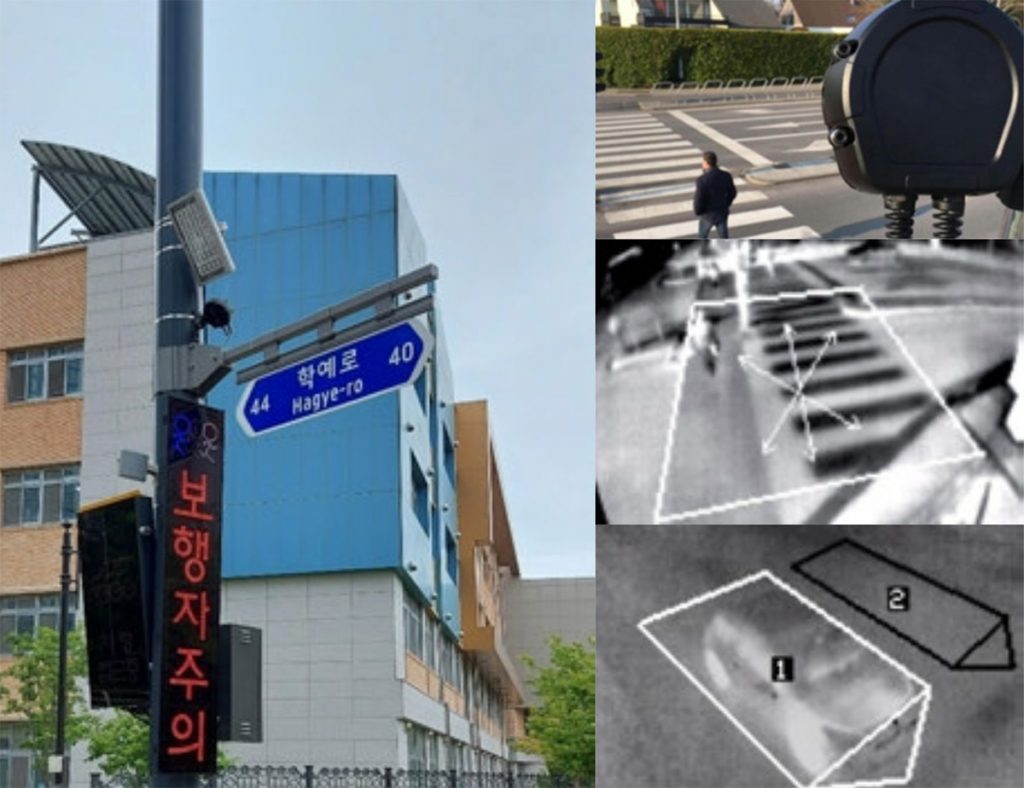
Finding the right mix of “image fusion”
Initiatives like the one spearheaded by WYD Technology and Teledyne FLIR are growing more common as companies experiment with a combination of CCTV, radar, and lidar sensors. Every street corner is different—different weather, different lighting, different lines of sight—so the solutions need to be flexible to be widely applicable. Each approach has its own strengths and weaknesses. CCTV doesn’t perform as well in poor lighting conditions, for instance, and both LiDAR and radar detection can be compromised by refraction or diffraction caused by heavy precipitation.
Adding the thermal detection element has so far proven to be crucial in making smart crosswalks effective at all hours and year-round, since traditional imaging can be rendered ineffective by poor visibility or nighttime conditions. The FLIR TrafiOne sensors are weatherproof and UV-resistant, further lending to their effectiveness in urban environments where adverse weather is a factor.
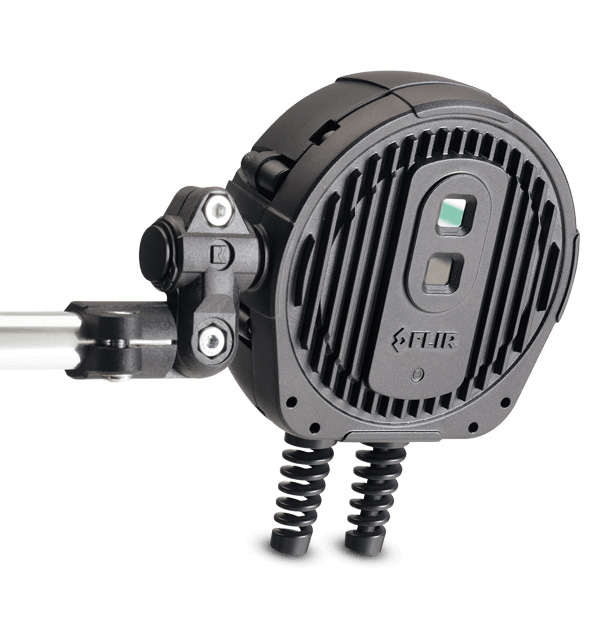
The pilot trial of a smart crosswalk using FLIR traffic sensors took place in 2014 at an elementary school in Eunpyeong-gu. Following that trial, multiple local governments have launched programs to test the effectiveness of this warning system. Smart crosswalks featuring TrafiOne technology have been installed at Wollang Elementary School in Jeju-si, Hagye-ro in Sejong-si, and other locations across Chungcheongnam-do, Gyeonggi-do, Gangwon-do, and Seoul. These initiatives have been widely acclaimed for helping save lives, and the FLIR TrafiOne smart city censor won the Road Safety Commissions’ 2020 Innovation Award.
Other detection opportunities: World Cup 2022 and beyond
The applications for smart traffic sensors don’t stop at the crosswalk. These smart sensors are also valuable for preventing vehicle collisions and controlling and monitoring the flow of foot traffic.
At the 2022 World Cup, attended by a staggering 3.4 million spectators, the government of Qatar relied on 700 FLIR TrafiOne sensors for traffic monitoring and crowd flow control. The sensors detected pedestrian movement and adjusted traffic signal timing accordingly, which allowed for safer pedestrian crossings while providing efficient crowd flow management. A situation-dependent, responsive, and adaptive system that prioritizes pedestrians over vehicle traffic is an effective tool for managing the chaos that can come with high-foot-traffic events.
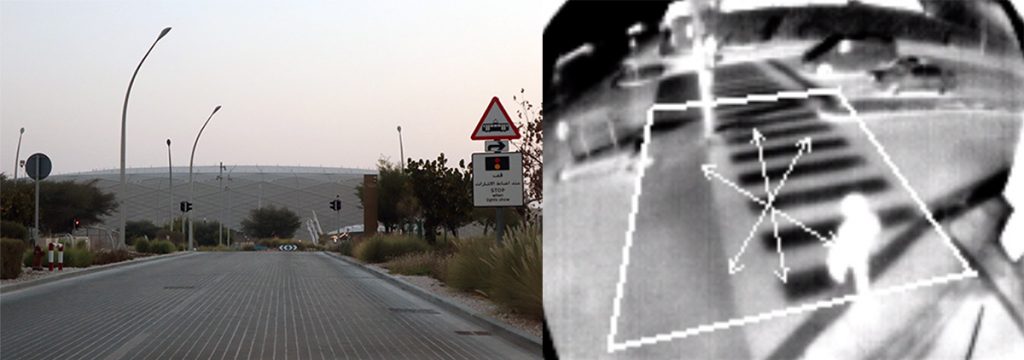
Thermal detection applies to vehicles, too. In the UK, the Durham City Council engaged FLIR and UK traffic safety specialist Westcotec to create a collision avoidance system that would eliminate injuries and fatalities at a dangerous intersection. A staggered junction near the city of Durham saw nine collisions between 2012 and 2017, one of which was fatal. The issue was caused by vehicles attempting to cross or turn onto or off the B6532, a main road where cars drive at high speed. The collision avoidance system uses TrafiOne thermal sensors to detect cars in all weather and light conditions. The sensors then wirelessly communicate with solar-powered electronic signs that deliver a “TURNING TRAFFIC” warning. In the two years following installation, no collisions were reported.

The problem of pedestrian safety is a multi-faceted, complex one—but the solutions are proving themselves just as multi-faceted. There are even public health implications to smart sensor technology, since automatically detecting pedestrians when they enter a crosswalk reduces the need for pedestrians to push buttons and risk germ transfer. This was a consideration for the Qatar World Cup and will likely continue to be an important factor for large events.
The small, personal steps pedestrians can take to protect themselves—obeying traffic signals, using crosswalks, looking both ways—are still important, but pedestrian safety is a collective responsibility, not just an individual one. With the help of imaging technology, crossing the street can hopefully become safer than ever.



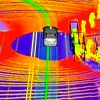 Avoiding bumps on the road: how thermal imaging can improve the safety of autonomous vehicles
Avoiding bumps on the road: how thermal imaging can improve the safety of autonomous vehicles 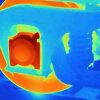 Hot Wheels: Can thermal imaging and better hotboxes improve rail safety?
Hot Wheels: Can thermal imaging and better hotboxes improve rail safety? 